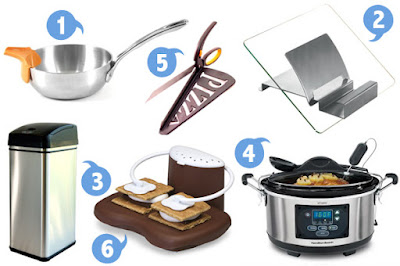Discover the secrets of Japanese style meal planning and preparation in this Kikoman.com article.
In the 1970s, the daily diet revolved around the so-called Japanese-style meal—nutritionally balanced foods that arguably define Japanese cuisine. In our current Feature series, we take an in-depth look at these meals, including their planning and preparation.
The Ideal Ichiju San-sai
The Japanese-style meal involves some planning. The traditional menu is described as ichiju san-sai, or "one-soup, three dishes," and features soup, one main dish and two side dishes. Not counted but always served with these are rice and konomono, pickled vegetables.
Meal planning takes its cues from nature, and incorporates fresh seasonal ingredients. One begins with the staple, typically plain rice, or rice with seasonal ingredients added, such as bamboo shoots in Spring or chestnuts in Autumn.
Following this is the main dish, which usually contains a substantial amount of protein such as meat, fish or tofu. Examples are grilled or sautéed fish; yaki-niku (grilled meat); tonkatsu (pork cutlet); or agedashi-dofu (deep-fried tofu with soy sauce-based sauce garnished with ginger and green onion). Each of these would be accompanied by vegetables or some kind of potato.
Next are the two side dishes, for which one chooses vegetables not included in the main dish, prepared using a different method. Additionally, care is taken not to duplicate the ingredients or preparation methods of either of the side dishes themselves. The ingredients and flavoring of the soup, finally, should complement all three dishes.
A typical ichiju san-sai menu might include salt-grilled fish as the main dish, and miso soup with tofu and wakame (kelp). One of the two side dishes might be chikuzen-ni, whose ingredients of chicken, carrots, burdock, lotus root, sato-imo (taro), and konnyaku (yam cake) are sautéed together and then simmered. The remaining side dish could be goma-ae, blanched spinach with sesame dressing. The meal is accompanied by rice and konomono such as salt-pickled Chinese cabbage.
The main dish might be changed to one of meat and vegetables, while the second side dish—in this case goma-ae—could be replaced with a salad or with sunomono (a vinegar-marinated dish) made, for example, with cucumbers and wakame.
By choosing seasonal vegetables for as many of the dishes as possible, and by varying preparation methods—grilling, boiling, simmering, mixing with dressing (aemono), marinating with vinegar, and so on—the basic menu accommodates great variety.
Nutritional Balance
How well-balanced are such menus? If we use a current food composition table to calculate the nutritional value of the above menu, we find that rice (one-and-a-half bowls totaling about 80 grams), salt-grilled salmon (one slice at 70 grams), and individual servings of chikuzen-ni, goma-ae and miso soup, provide a total of some 620 kilocalories, which is roughly equivalent to one-third the recommended standard daily calorie intake for an adult woman.
The amount of protein is slightly high at 32 grams, and the fat intake is an almost appropriate amount of just over 25 percent of total calories. Moreover, this meal offers 35 percent of the recommended standard daily intake of calcium, which is relatively difficult to obtain; about the same percentage of vitamin C; and the appropriate amount of minerals. It also provides the recommended daily intake of vitamin A (retinol), most of this sourced from the carotene of vegetables such as carrots and spinach. Forty percent of the fats come from plant-derived foods, mostly sesame, and these are all very healthy.
The amount of rice consumed may be adjusted as appropriate for gender, age and level of physical activity. An appropriately balanced diet is therefore relatively easy to achieve by eating meals comprising rice with soup and three accompanying dishes.
Cooking Methods
The cooking of Japanese-style meals requires a fair amount of clean water. Rice is rinsed to wash away remaining bran prior to steaming; spinach for the side dish is blanched in boiling water, then plunged into cold water to preserve its fresh green color. In preparing raw fish for sashimi, plenty of water to wash the fish is indispensable.
Water is also needed to simmer or steam foods, such as niku-jaga (simmered meat and potatoes) or chawan-mushi (steamed egg custard); even when serving chilled tofu (hiya-yakko), the tofu is chilled in cold water and the accompanying green onion and ginger garnishes require water in their preparation.
Because Japanese-style meals are eaten with chopsticks, skill with kitchen knives is considered of great importance. Japanese kitchen knives are traditionally single-beveled, thought to help retain flavor in slicing fish for sashimi, for example. Although professionals use single-beveled knives, many households today use double-beveled, Western kitchen knives.
Many dishes call for ingredients to be cut into very thin, uniform strips or bite-sized pieces, and so a good cutting board is as indispensable as the proper cutting technique: cucumbers and daikon radish, for example, are often sliced very thin, and the white stems of long onions are precisely cut into long, fine, delicate strips called shiraga-negi, used as garnish.
Until recently, the Japanese-style meal was also the norm for breakfast in most homes: children would wake to the rhythmical sound of their mother's knife chopping vegetables, accompanied by the fragrance of miso soup.
Although ingredients differed from one family to another and each had its own favorite tastes, the basic styles of eating were repeated every day, and standard cooking techniques were mastered and used in all households. The recollection of such meals brings back warm memories for many.
Source:http://www.kikkoman.com/foodforum/thejapanesetable/30.shtml













.jpg)
.jpg)





























